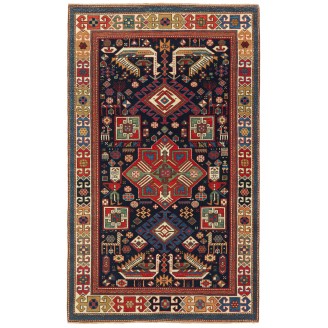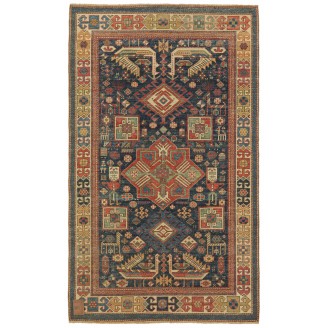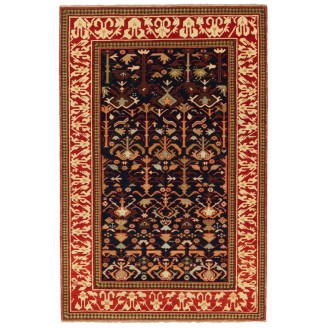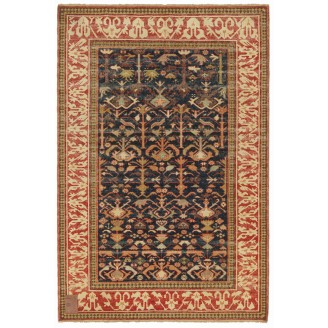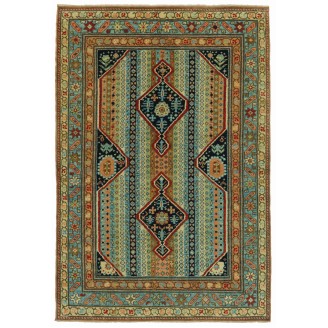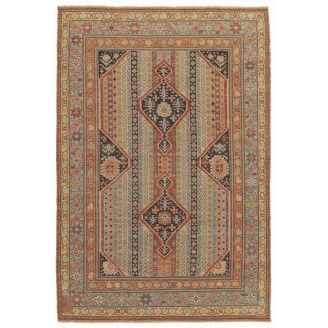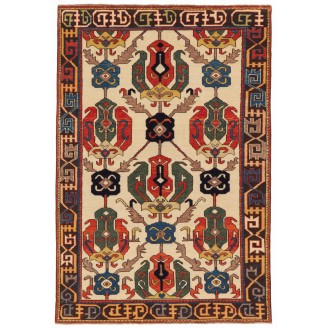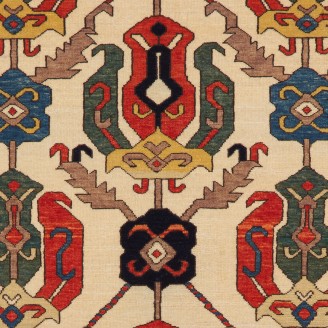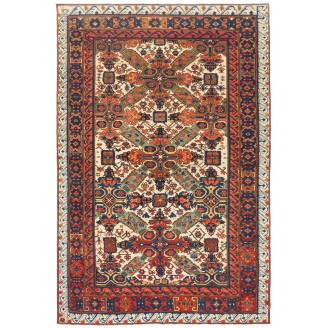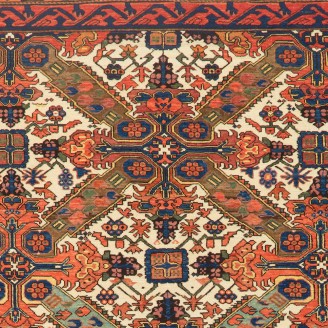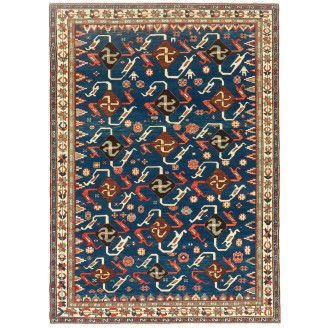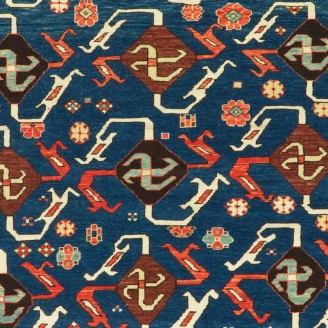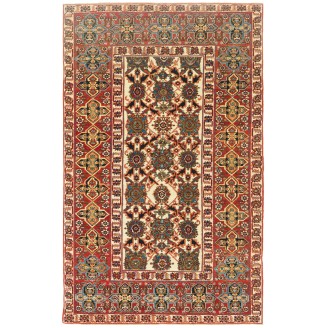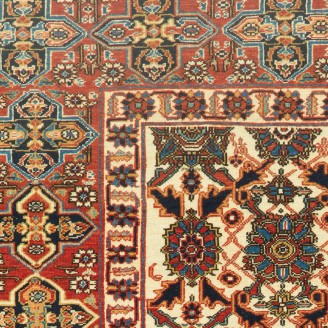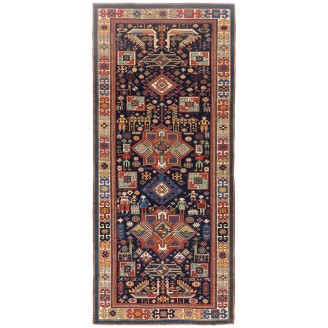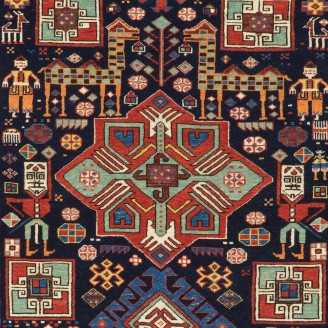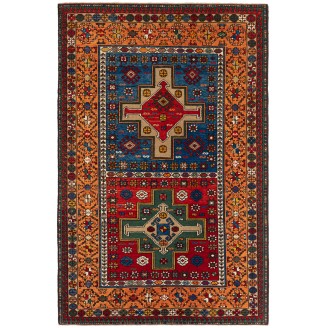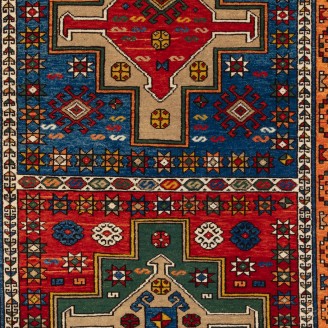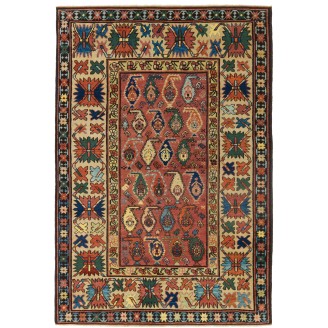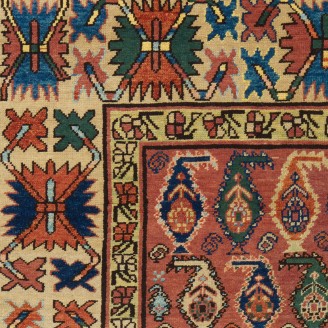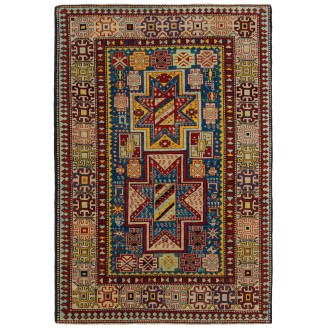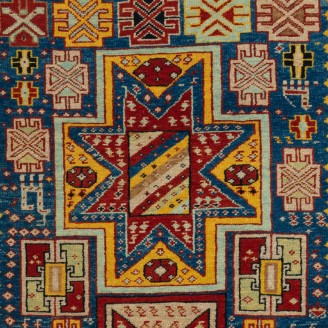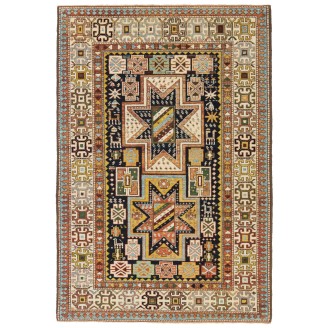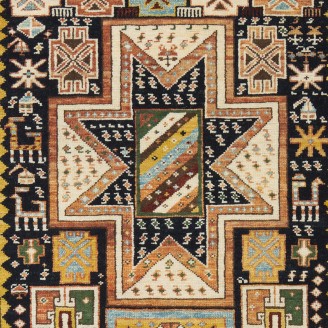At the beginning of the twentieth century, the names Tcherkess, Kutais, Tiflis, Georgian, Armenian, and Kazak were applied to the various Caucasian weaves west of Karabagh and south of the Greater Caucasus. Nowadays, all but the name Kazak has disappeared mainly except among the doyens of the trade who rightly assert that neither does the modern classification of the Kazaks comprise a homogeneous group based on design or structure, nor are they likely made by the same tribe or group.
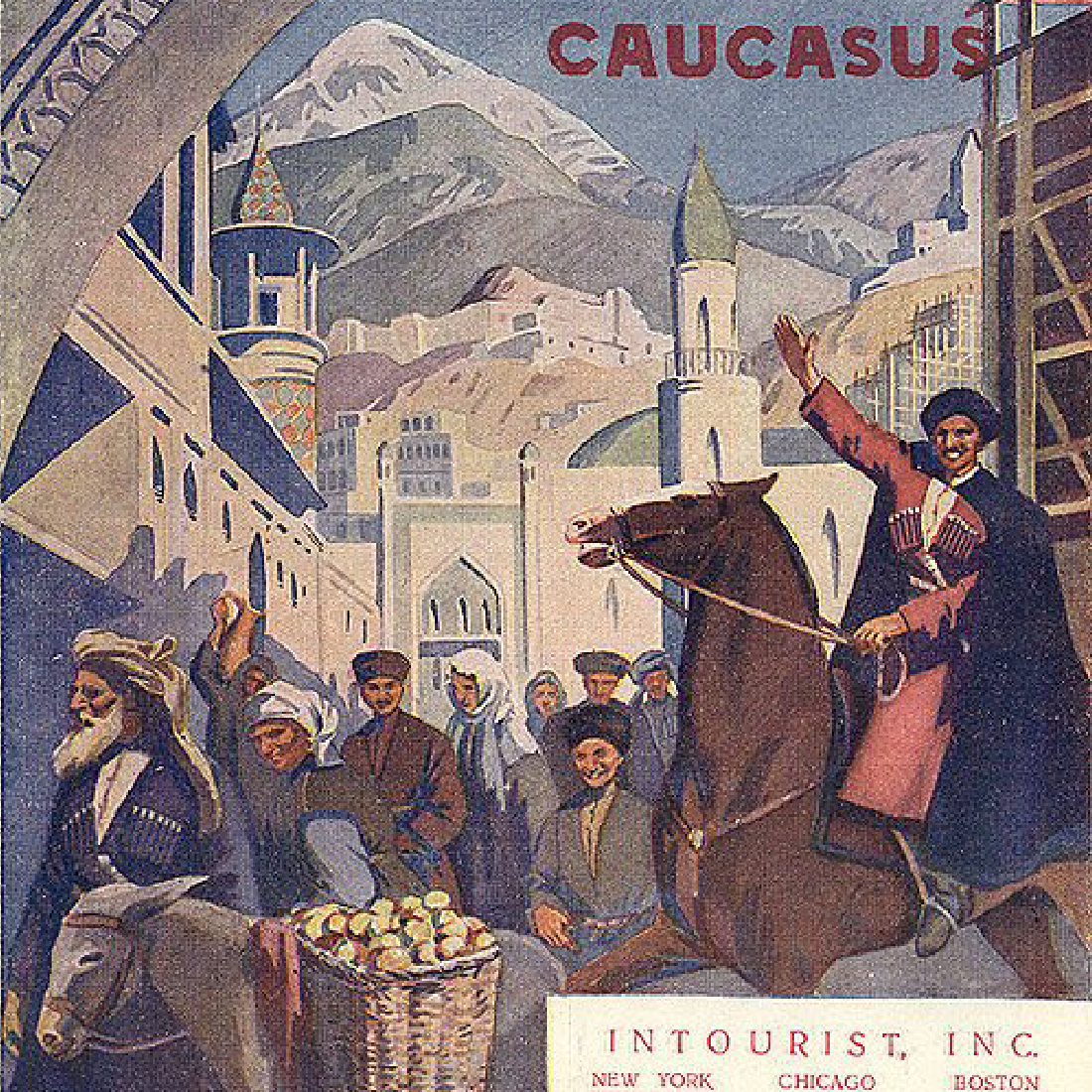 Advertisement Intourist Inc 1960s
Advertisement Intourist Inc 1960sThe confusion surrounding Kazak rugs is mainly due to the strange phenomenon of the name’s existence in southwestern Caucasia. The word ‘khazaki’ itself is problematic as two distinct groups of people bear the name, and neither of them seems to have anything to do with knotted rugs or the southern Caucasus. The word means ‘adventurer,’ ‘freebooter,’ or ‘rider of the steppes’ in the Turkic languages, and it was adopted into Russian at the time of the Tartar invasions. Not everyone agrees even with that statement; some suggest that the Russian word had a separate origin. To those without emotional involvement in the issue, that seems unlikely, given the evidence.
Kazak rugs have a strong folk influence on their design. They house big, bold, dominating geometric patterns on a subtle color backdrop, giving them an edge that differentiates them from other rugs.
The body frame of the carpet has scattered geometric figures all over. These include folk-inspired detached shapes, squares, diamonds, and medallions—sometimes, these designs incorporate animals, trees, and floral motifs.
Swastika, Karachov, Fachlaro, and Bordjalou are some of the typical motifs found on various types of Kazak rugs. These can only be considered general motifs; individual weavers’ interpretation varies widely within the overall format.
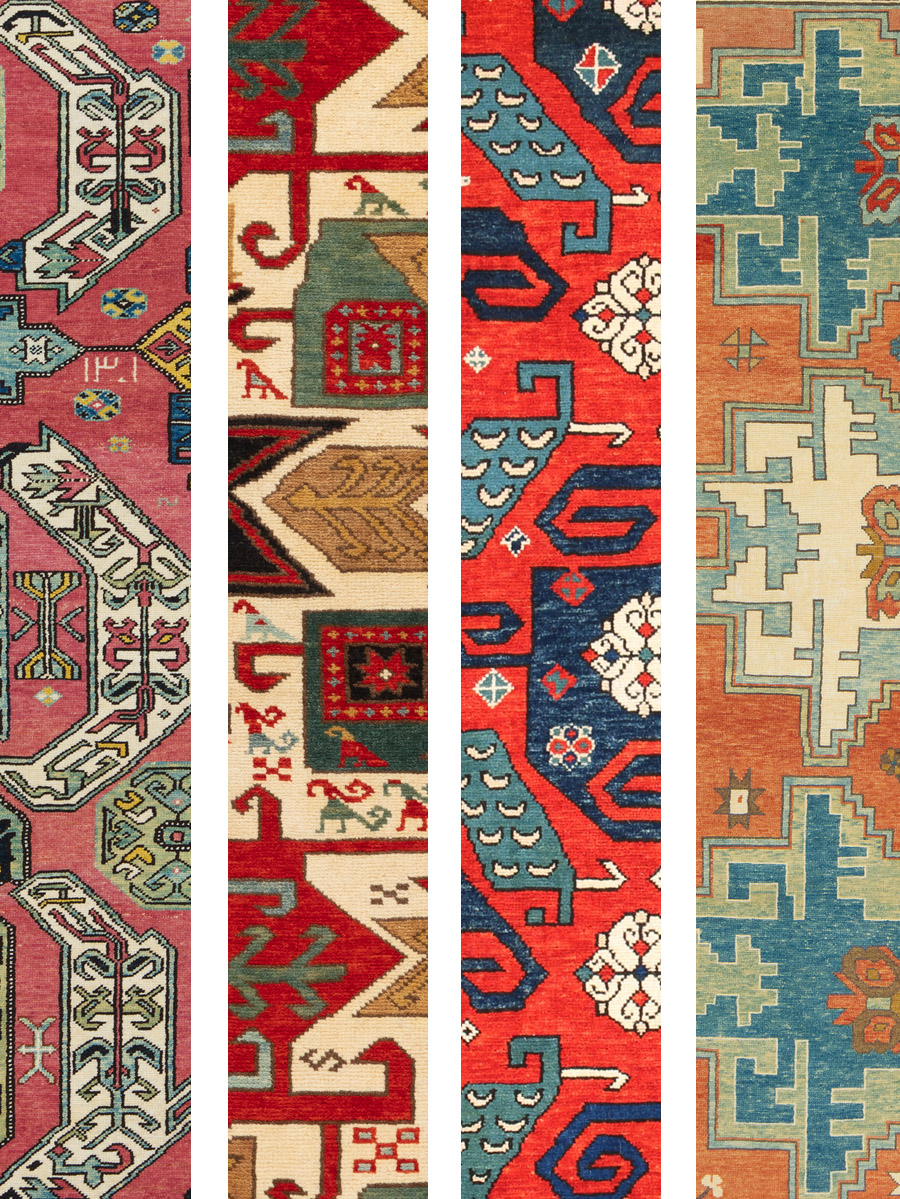 Kazak Patterns
Kazak Patterns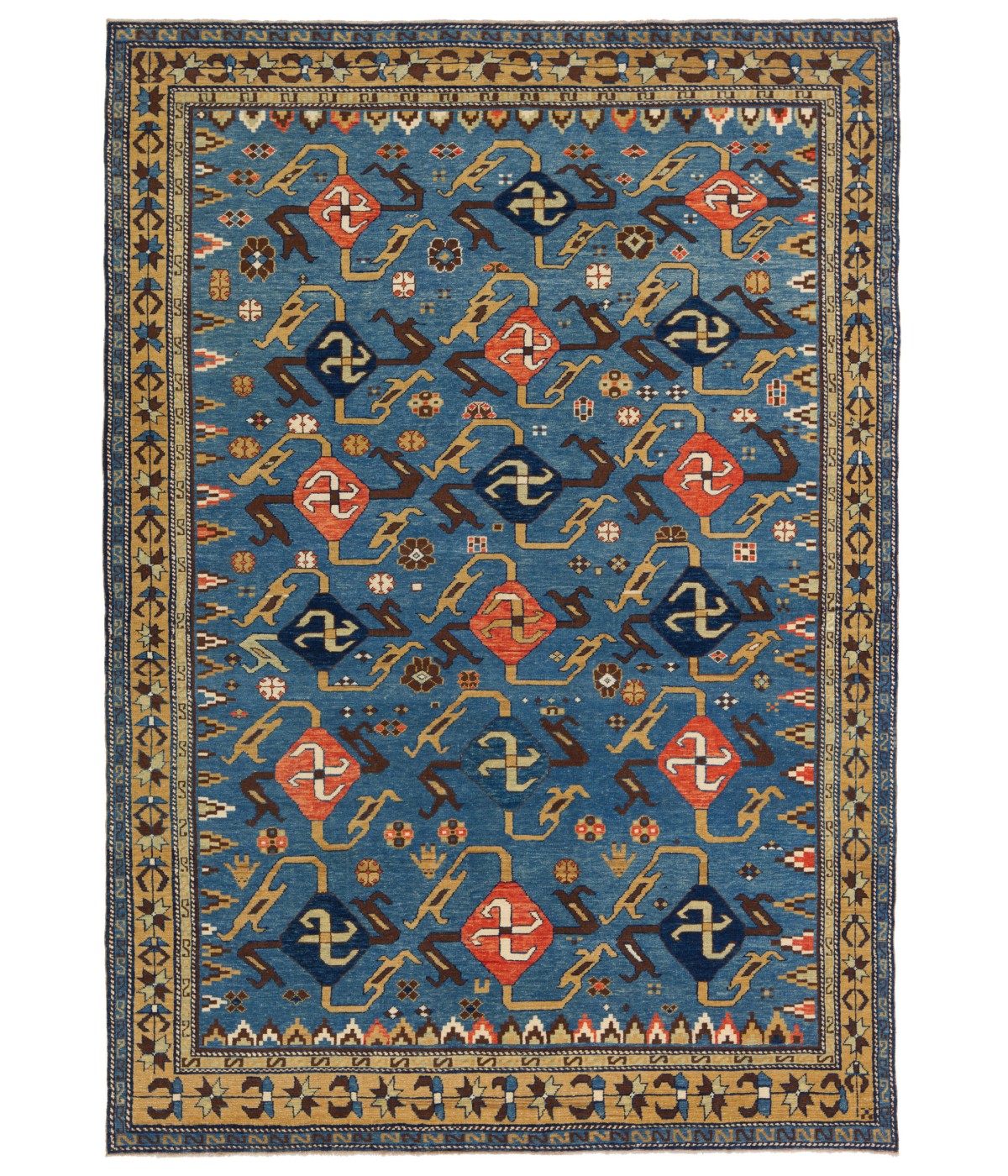 Rug with a Swastika Design
Rug with a Swastika DesignWith their warm natural colors and robust designs, Kazak rugs are a common sight in discriminating homes worldwide. Used with modern or antique furniture, the good Kazak rug, whether worn or not, adds a new dimension of luxury to a home.
The colors used are vibrant via the rug’s denser dyes. Each rug uses about five to seven colors to create an elaborate effect. The rugs use bright colors like red, blue, green, and ivory. The heavy color draws the observer’s eyes toward the Kazak’s emblazoned geometric patterns.
Kazak class is that both warps to which a knot is tied lie on an even plane. This, however, cannot be considered a constant feature because, in some of his subdivisions, a depressed warp is a common occurrence. Structurally, the Kazaks do display several standard features: they are knotted with the symmetrical (Turkish) knot; the warp and weft are almost always wool, the former generally undyed and the latter dyed, and the pile is wool; on the line of the warp threads the knots are longer than they are wide, and the weft crosses two or more times between each row of knots without apparent order.
 Photo: Kazak Rug Weaving, 2021 Gaziantep
Photo: Kazak Rug Weaving, 2021 Gaziantep
